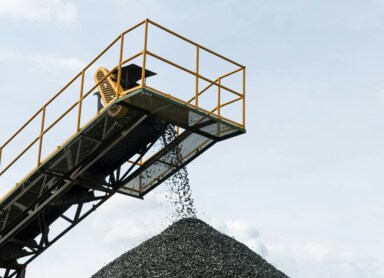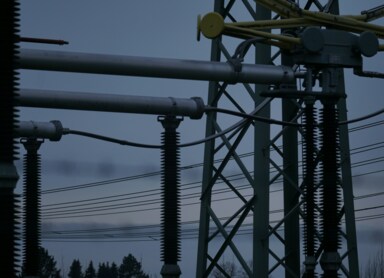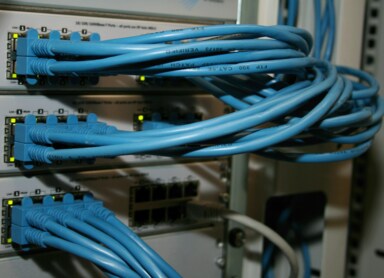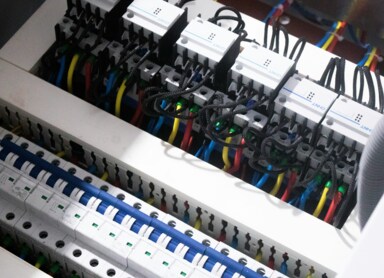What is a OSD network is? We explain!
Although the electricity grid is gradually being rebuilt from a centralized model to a smart grid emphasizing a plurality of smaller and larger energy producers and distributors, there still has to be someone in charge of balancing energy nationwide and maintaining the central grid that we all use - prosumers, consumers and businesses alike. That role is played by the DSO distribution network. What is it and how does it work?
OSD network - definition and basic information
The definition of an OSD network (or more precisely, a distribution network operator) can be found in the Energy Law1. According to Article 3(25) of that law, an OSD should be understood as an energy company engaged in the distribution of gaseous fuels or electricity, responsible for network traffic in the gas distribution system or the electric power distribution system, the current and long-term security of the operation of this system, operation, maintenance, repair and necessary expansion of the distribution network, including connections with other gas systems or other electric power systems.
The extensive construction of the provision may raise questions about the actual role played by the DSO in the national electricity system. The easiest way to compare it to a guardian and supervisor, who makes sure that the main elements of the network are operating efficiently and guarantees the availability of electricity.
Operating as an OSD is a licensed activity, which means that the entity that carries it out must obtain the appropriate authorization from the state for this purpose. This, in turn, is conditional on, among other things, demonstrating that the entrepreneur has a sufficiently developed infrastructure to manage the network in its territory in an economically efficient manner and ensure the safety of system operation.
What are the tasks of the OSD network operator?
The operators of the OSD's electric network are required to perform the duties indicated in the applicable regulations. You can find them on the websites2 of individual operators.
Duties of OSD operators in the field of electricity supply
First and foremost, an OSD operator must conduct network traffic on the distribution network in an efficient and safe manner that ensures equal treatment of all users. It also cooperates with other electricity system operators or power companies to ensure consistency of system operation and coordination of the various entities.
DSOs also manage the capacity of generating units and take care of balancing electricity, that is, they make sure that each point of energy consumption receives exactly as much quality electricity as the individual contract stipulates. If the standard balancing conditions do not provide sufficient electricity supply, the DSO is obliged to purchase it on the power exchange. Their duties also include being transparent with customers by providing information on the terms of service.
Duties of DSOs on maintenance and expansion of the power grid
DSOs are responsible for constructing and ensuring the conditions for proper operation of individual grid systems. They are also required to collect, manage, process and make available metering data in a form agreed upon by users. They make sure that users who have entered into a contract for the sale of electricity are able to perform it under the agreed terms and conditions.
The DSO electricity network - how does it work and who manages it?
Currently in Poland, the OSD network consists of 7 entities, including 6 dealing with the electricity system and 1 dealing with the gas trading system. The operators of the electricity OSD system are:
- Enea Operator Sp. z o.o;
- Energa-Operator S.A.; Stoen Operator Sp. z o.o;
- Tauron Dystrybucja S.A.;
- PGE Dystrybucja S.A.;
- PGE Energetyka Kolejowa S.A.
The territory of Poland has been divided geographically among the various OSD network operators. Therefore, it is not possible to change it, unless you change your place of residence or headquarters. However, it is possible to change the electricity seller. Interestingly, on the website of the Energy Regulatory Office you can find almost 200 entities licensed by the ERO to produce energy. The vast majority of them, however, do not supply electricity to individual system users, but can resell it to larger DSOs.
The body that monitors the correctness of the OSD operator's duties is the President of the Energy Regulatory Office. He verifies whether the entity providing the licensed service:
- ensures that the technical parameters of electricity, the continuity and reliability of electricity supply and the efficiency of network operation are maintained;
- ensures the development of the power grid and its connection to other grids;
- develops a plan for introducing restrictions on the supply of electricity.
As an interesting aside, it is worth pointing out that the entire electric power system operates on the basis of the Distribution Grid Operation and Maintenance Manual. This is a comprehensive document developed by all DSO entities, which specifies the detailed conditions for the use of the network by system users, as well as the manner of energy traffic, operation and development of the power grid. A user who wants to connect to the grid must meet the requirements indicated just in this manual.
OSD distribution network - structure and key elements
The electricity distribution network consists of a number of elements, the smooth operation and mutual cooperation of which are necessary for the participants of the system to be able to use it under the agreed conditions. Key elements of the network include:
- overhead lines;
- cable lines;
- substations;
- transformers.
Individual links are gradually being replaced with new, more technologically advanced ones. This is thanks to the reconstruction of the DSO network, among other things, with funds supplied from the EU budget under the Infrastructure and Environment Operational Program. According to 2015 data, a particular improvement can be seen in the replacement of HV cable lines, MV cable lines and LV overhead lines. An increasing proportion of them are younger than 10 years old. Nevertheless, the life span of many elements of the DSO networks of the country's largest operators has already exceeded 40 years, so experts are increasingly drawing attention to the need for their urgent modernization.
Importance of the DSO network for the stability of energy supply
The proper functioning of the DSO system is of elementary importance for the energy stability of the entire country and energy security. Without a well-functioning infrastructure and the creation of conditions for the flow of electricity with appropriate parameters, the functioning of business entities is impossible.
The gradual transformation of the electricity system model to a smart grid allows participation in the generation of energy going into the grid by hundreds of thousands of participants who have decided to install photovoltaics. You can become one of them to take care of the national, as well as your own energy security, reduce electricity bills and become independent of energy price fluctuations. The gradual transition to green energy is a prerequisite for the development of a strong and stable economy. We all benefit from it!
1. https://isap.sejm.gov.pl/isap.nsf/DocDetails.xsp?id=WDU19970540348 [dostęp: 14.08.2024 r.]
2. https://energa-operator.pl/o-nas/o-firmie/przedmiot-dzialalnosci/osd [dostęp 14.08.2024 r.]






